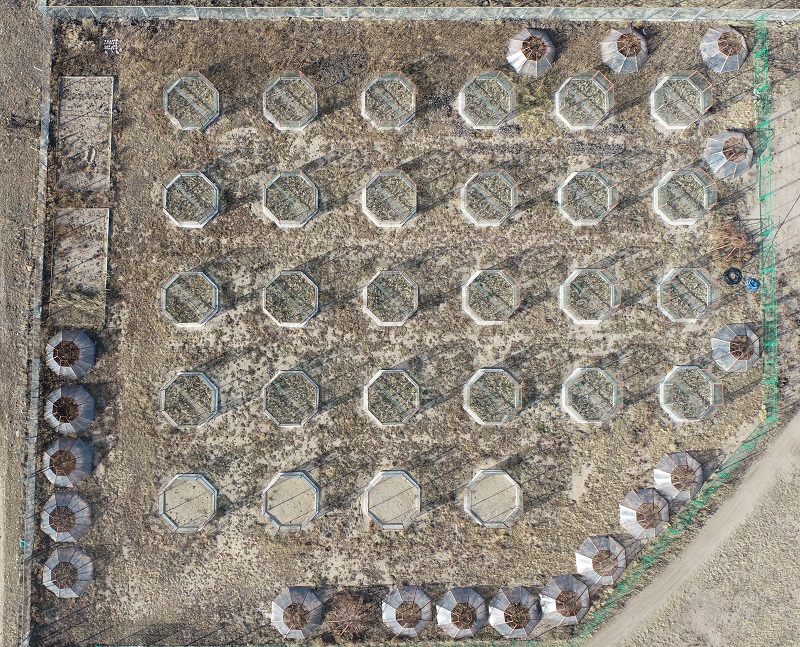Experimental background and scientific questions
Anthropogenic activities such as the consumption of fossil fuels had led to dramatic increases in atmospheric carbon dioxide (CO2) concentration from280 ppm to more than 400 ppm since Industrial Revolution. Simultaneously, the consumption of fossil fuels and chemical fertilizer production also led to an elevation in atmospheric nitrogen (N) deposition rate. Carbon dioxide and N are recognized as main factors that would influence terrestrial ecosystem productivity. Enhance CO2 concentration and N addition will significantly affect terrestrial plants and increase terrestrial carbon sink. The potential interaction between the two driving factors poses a huge challenge to the prediction of climate change carbon feedback.
Nitrogen deposition and biological N fixation are main sources of N in terrestrial ecosystems. However, increased N deposition is the major reason for legumes lost in ecosystems and a key factor that influence rates of legume biological N fixation. It is remains uncertain that how N deposition affect the functional characteristics of legumes and their N fixation function, and finally how it affects carbon cycling in ecosystems. Therefore, it is important to prediction and estimate of global carbon cycling by explore the impact of different N sources (N deposition and N fixation by legumes) on the carbon cycle of ecosystems in the context of rising global CO2. An experiment of elevated atmospheric CO2 concentration, N addition, and increase the dominance of legumes was designed in a semi-arid temperate steppe in Duolun County Inner Mongolia, China at 2019.
Experimental design
The experiment was located in Duolun County, Inner Mongolia. There are 28 regular octagonal plots in the experiment (plot area 13.2 m2). An octagonal open-top chamber (OTC) will be built above the sample plot. Firstly, 1.2 m deep soil was dug out. Brick and concrete structure was used to construct the plot pool in the excavated plot. The soil was mixed after seven mm sieve to remove stones and seed bank, and backfilled into the octagonal plot pool. Then, the OTC was connected tightly over sample plot pool. There is 4 m between any two adjacent OTC sample plot (Figure 1).

Figure 1. Experimental construction.
The experiment had two global change manipulation factors, each factor had two levels: atmospheric CO2 concentrations (ambient and ambient plus 200 ppm), and N deposition (ambient and ambient plus 10 g N m-2 year-1). Among the 28 OTC plots, 4 were potted plant plots for species combination, mainly investigated the effects of single or combined planting of legumes and non-legumes on physicochemical property of soil under the condition of elevated atmospheric CO2 concentration (Figure 2). Another 24 plots were arranged into four rows and six columns. The four treatments were randomly distributed in each column: 1) Control (C, the community without legumes); 2) Increase the dominance of legumes (L, replace with 20% legumes plants in the original community); 3) N addition [N, community without legumes (the same community composition as the control treatment), and the N addition amount is 10 g N m-2 year-1]; 4) Increase the dominance of legumes and N addition (LN). Each of the two column plots forms a block group. In each block, one column was listed as the CO2 enrichment site, and the other column maintained the ambient atmospheric CO2 concentration. Therefore, the experiment included a total of 8 treatments: 1) C, 2) L, 3) N, 4) LN, 5) CO2 enrichment, 6) CO2 enrichment +L, 7) CO2 enrichment +N, 8) CO2 enrichment +LN, and each treatment was repeated for 3 times (Figure 3).


